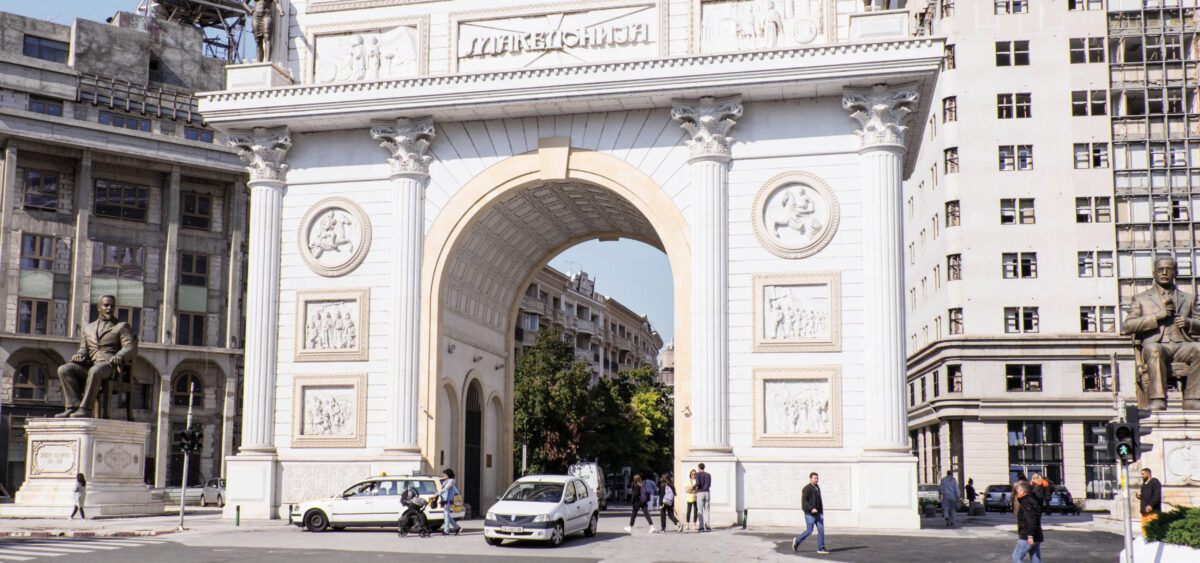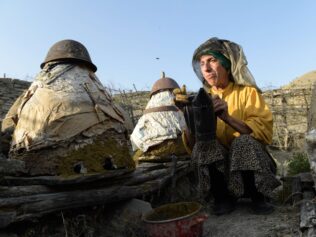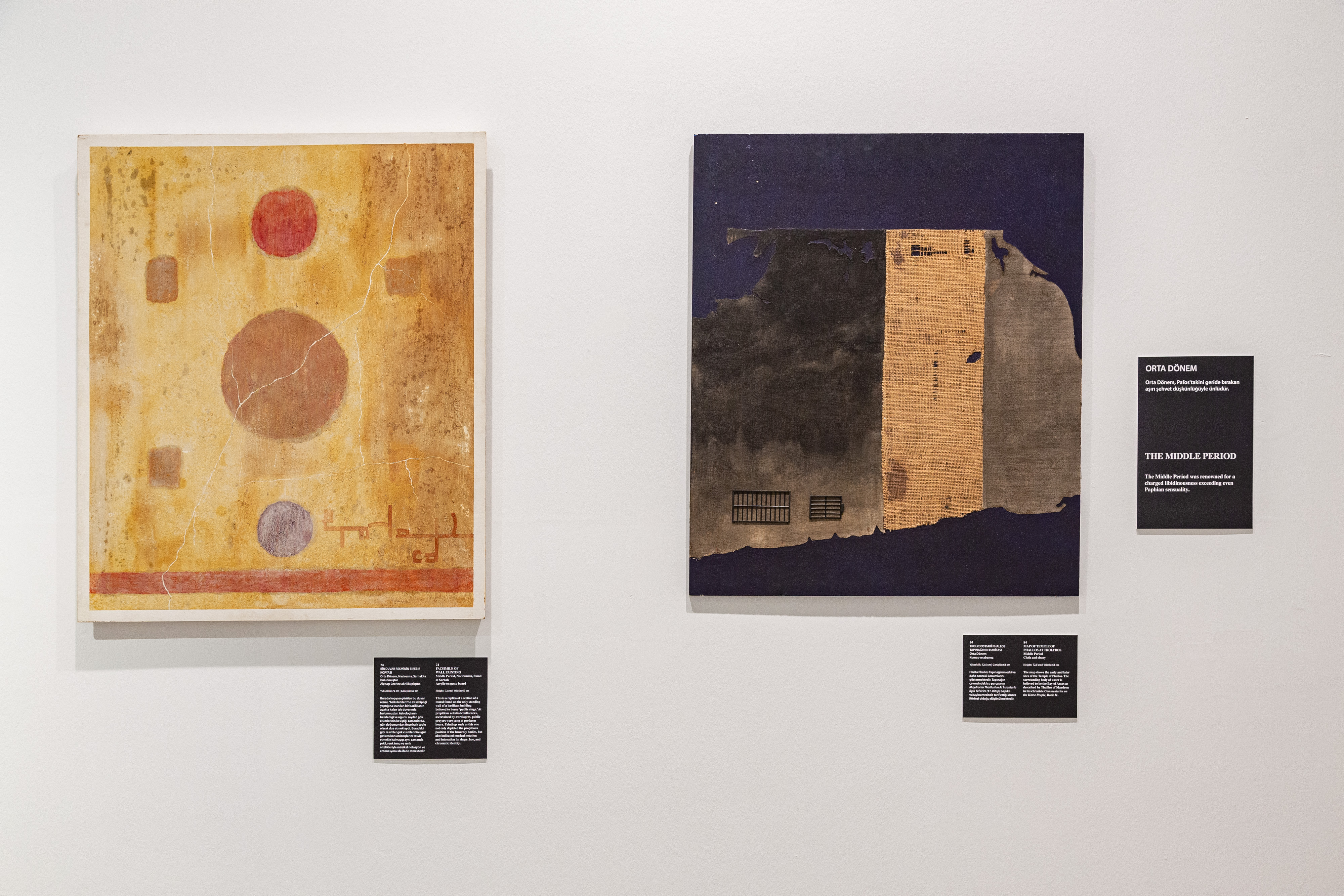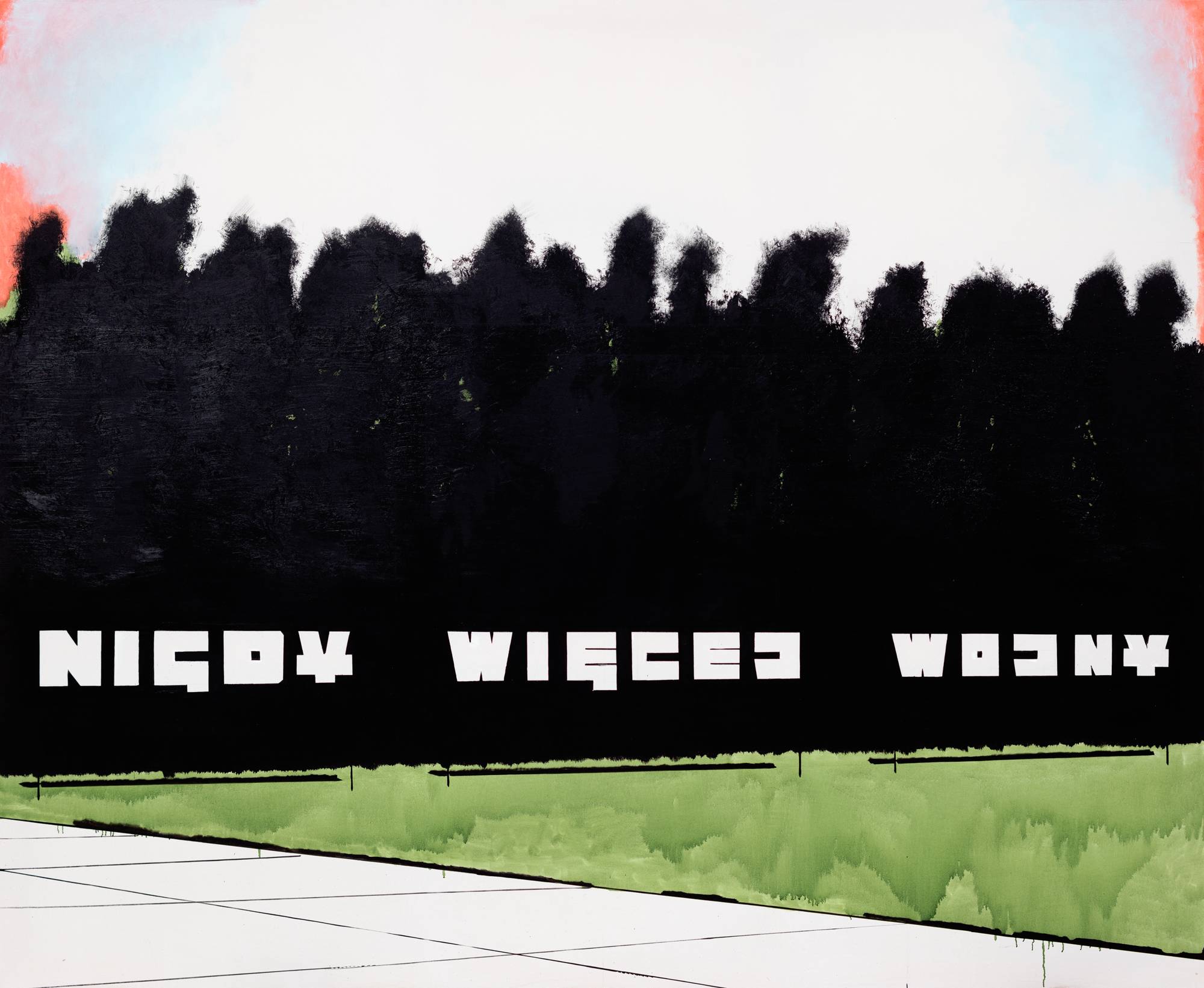
Sometimes a regular trip can become a journey through time—and an instructive history lesson at that. Especially in a place like Skopje, the North Macedonian city whose ambitions—and design—date back to the times of Alexander the Great.
I passed through Skopje in fall 2022. I had heard a lot about the exceptional fate of this city in the 21st century, but to hear is one thing, and to see is another—there were still some shocks and surprises.
As I walked through the streets of the North Macedonian capital, I thought about Planet of the Apes. Franklin J. Schaffner’s movie—released in 1968—is pretty old, yet is hard to forget. One sentence in particular stuck in my mind: “The question is not so much where we are as when we are.”
In Planet of the Apes, a team of astronauts find themselves in a world where an alternate evolutionary scenario took place. The roles of apes and hominins were reversed: the hominids (Hominidae) created language, culture, technology, and civilization itself, while humans (Homo) function on the margins of society. Thus they do not have the status of people and the rights that go with it; they are the equivalent of what we still like to call “animals” in our anthropocentric culture.
Downgraded to the level of animals, the astronauts wonder where they are; how this world can be so similar to theirs, and yet so different. They only learn the answer when they realize that instead of traveling through space, they traveled through time. The question of what point in time they are in—the past or the future, a beginning or an end—cannot be easily answered. It all depends on our perspective and what we think about the past—that is, the historical foundation of our present.
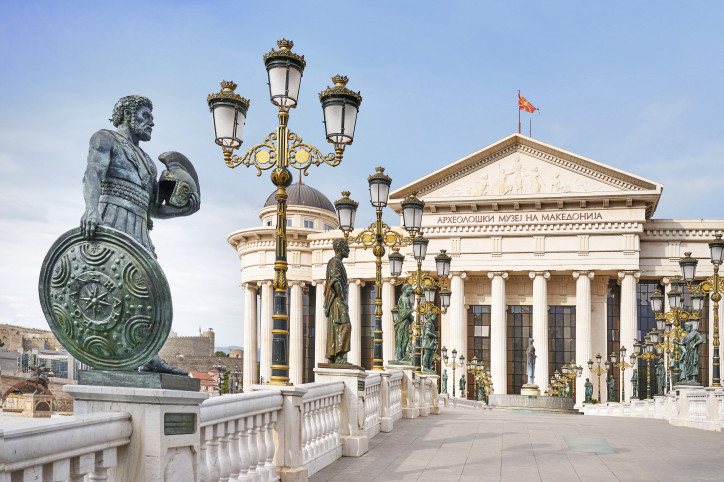
In the not so distant past in Skopje, such questions were raised regarding the future of the city. The response to them was so radical that its effects are still hard to believe. The Republic of North Macedonia is a young country. It’s barely thirty-two years old—its history began when Yugoslavia was dissolved. At the same time, however, Macedonia is an ancient land. The most successful military leader of antiquity was Alexander the Great; he was born in the ancient Greek kingdom of Macedon. When the 21st-century arrived, the Macedonian government decided to return to the past. It followed the path of Alexander and launched the process of both antiquating and Alexandrizing the capital of the young republic.
Before we walk the streets of the “new ancient” Skopje, let us return to the year 1963, when a massive earthquake destroyed the city. There were more than a thousand casualties, while over one hundred thousand people were made homeless. The capital had to be entirely rebuilt. The tragedy in Skopje opened new architectural perspectives as the whole world rushed to support it. The UN was involved in the reconstruction of the city. A sort of Cold War ceasefire was even arranged, since aid for Skopje came from both East and West—American and Soviet troops could shake hands in the neutral Yugoslav republic.
An international competition for the urban design of the city was announced. It was won by a prominent student of Le Corbusier, Kenzō Tange, who joined the project alongside the Croatian studio of Radovan Miščević and Fedor Wenzler. Poland sent the team that was responsible for rebuilding post-war Warsaw, led by Adolf Ciborowski, along with the so-called Warsaw Tigers—Jerzy Mokrzyński, Waclaw Kłyszewski, and Eugeniusz Wierzbicki—a trio famous for a series of victories in contemporary architecture competitions. They designed the magnificent building of the Museum of Contemporary Art in Skopje.
A Classical Makeover
Kenzō Tange’s concept, which reimagined Skopje as an eye-popping futuristic city, initially received very positive feedback. Over time, however, this enthusiasm waned, stumbling over bureaucratic obstacles and clashing with reality as well as the growing economic crisis of the 1980s in Yugoslavia. In the end, Tange’s vision was never implemented, although the urban landscape of Skopje was enriched by a collection of modern architectural forms of the highest class. Brutalism—the expressive, visionary trend of late modernism—was particularly prominent. Many of the structures built at that time, such as the new university and the headquarters of the Central Post Office designed by Janko Konstantinov, are Brutalist classics, buildings of almost cult status and a pilgrimage destination for architecture lovers from all over the world. Today these structures resemble the ruins of an ancient civilization that sank into the depths of history, like Atlantis or, for that matter, Yugoslavia—even though they were designed only a few decades ago.
“Is modernity our antiquity?” asked the curators of the documenta 12 exhibition in Kassel in 2007. Had they asked the same question in Skopje, they would have gotten an emphatic “no” in response, alongside a closing statement: “Our antiquity isn’t modernism, it’s antiquity itself.” Around that year, a plan for the great antiquization of the city was maturing in the Macedonian capital. A year earlier, the Internal Macedonian Revolutionary Organization—Democratic Party for Macedonian National Unity (VMRO-DPMNE), a political party with an ultranationalist core and a populist temperament, had come to power. Its leader Nikola Gruevski felt that in order to properly celebrate the upcoming twentieth anniversary of independence, Macedonia should rise to the occasion and show the world that it was not the small post-Yugoslav republic everyone took it to be, but the true heir to the empire of Alexander the Great.
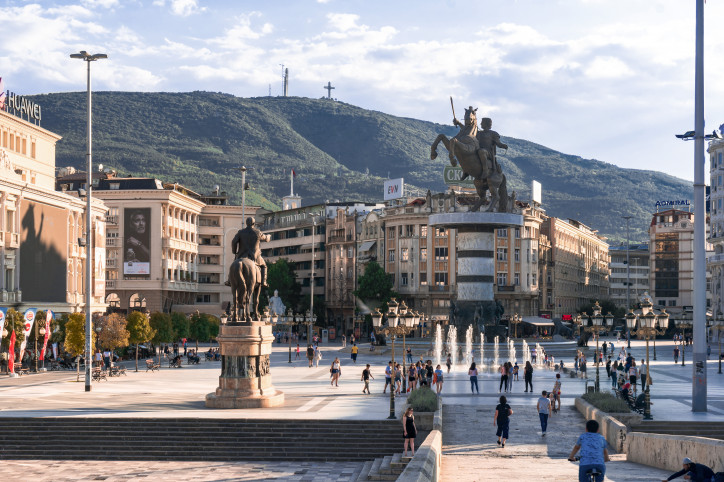
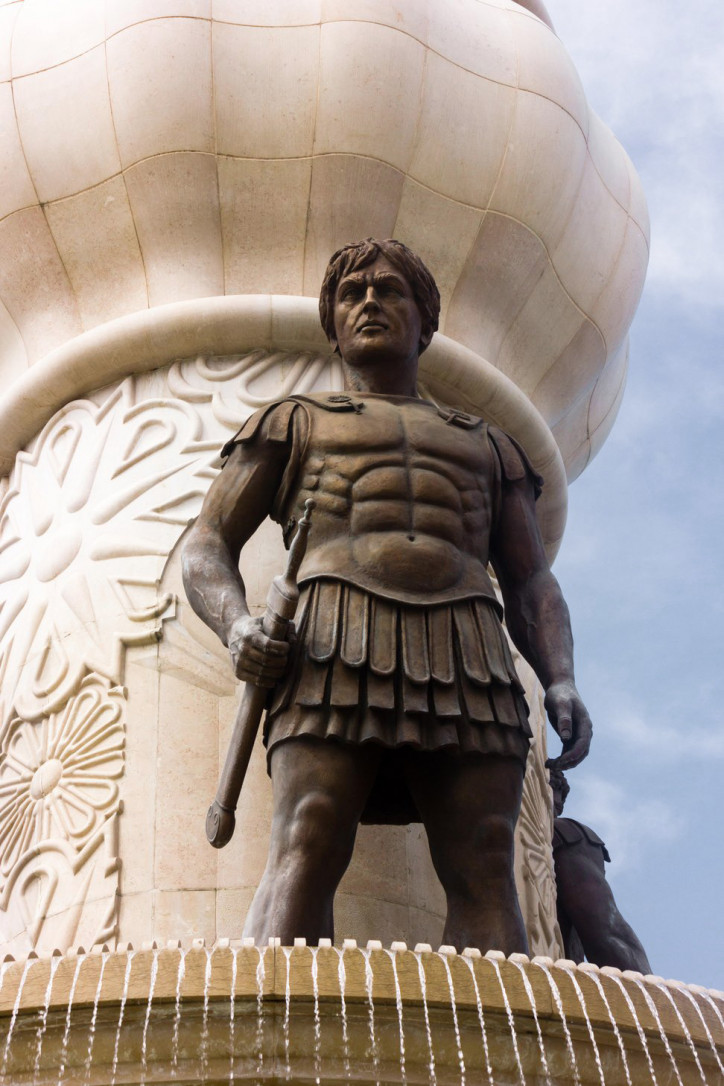
I won’t delve into the historiographic disputes over the legitimacy of Macedonia’s claims to the student of Aristotle. Gruevski also refused to participate in these debates and immediately launched his large-scale reconstruction of Skopje’s city center in an “antique” style. Bombastic colonnades and Hellenistic tympanums sprang up like mushrooms, and stone bridges stylized as works of ancient engineering appeared across the small Vardar river. Unsurprisingly, the project also included a magnificent triumphal arch. This truly imperial architecture was to become the backdrop for hundreds of classical statues depicting the greatest figures in Macedonia’s long past, which, in addition to the legacy of Alexander, includes a chunk of Byzantine history and the days of the medieval Bulgarian tsardom. As a result, today there are more statues than pedestrians in the city center. A pair of monumental “warriors” facing each other stands out from the crowd. One of them allegedly depicts the Macedonian King Philip II (due to their conflict with Greece, Macedonian authorities never officially confirmed this), while the other is said to be his son Alexander on a rearing horse.
As the center of Skopje put up the airs of an ancient superpower, the pearls of Brutalism located in the other districts slowly deteriorated. They were neglected, gradually covered with billboards, encased in Styrofoam, or destroyed. The fire that broke out in the post office in 2013 became a symbol of their decline. The iconic edifice was severely damaged, but the authorities never restored it and Konstantinov’s masterpiece is slowly falling into ruin. Do Macedonians regret the lost legacy of modernity? Some do, but the government that represents them doesn’t, since it identifies modernity with the legacy of communism and Yugoslavia. And these elements of the past should not be sources of national pride, after all—at least not in a country that is so young it dreams of being old.
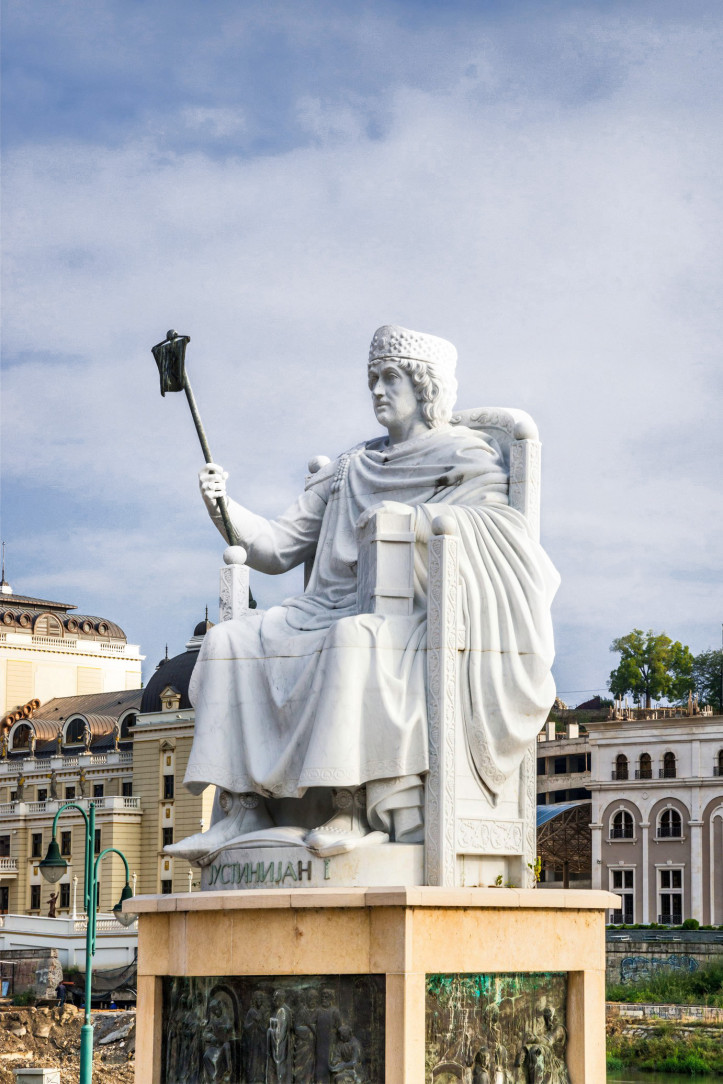
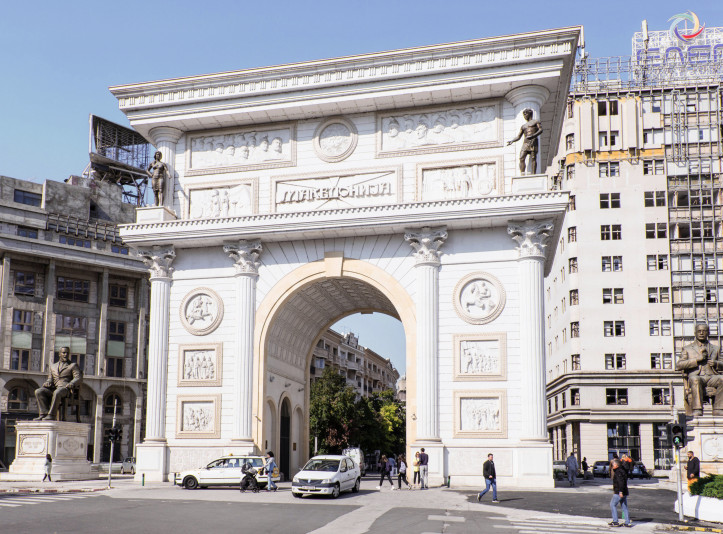
An Expensive History Lesson
What a mysterious plot twist: the city that was to become a futuristic metropolis dove straight into an architectural dream of the past. Or possibly a nightmare—it’s a matter of taste. Those who like the architecture of Disneyland or were impressed by the period set design for the screen adaptation of Henryk Sienkiewicz’s Quo Vadis will feel at home under the colonnades of modern Skopje. Its pseudo-antiquized atmosphere will please connoisseurs of camp; those who have an ironic mindset will also enjoy staying in Skopje.
I found it hard to enjoy my trip. Nationalist kitsch always has something comical about it, but observing the effects of its victorious offensive is more depressing and frightening than amusing; what happened in one city could happen anywhere else. After all, Skopje is the capital of one of the poorest countries in Europe—when the process of antiquization was launched, unemployment in Macedonia exceeded 30 percent. It’s bad enough that the imperial megalomania of the Alexandrian city center is shabby and superficial. But it’s even worse that it is grotesquely detached from the reality of the neglected city that stretches beyond the Alexandrian district. It looks almost obscene in a country that faces so many struggles, both political and economic. The new ancient Skopje is a horrendously expensive lie that Macedonians could not afford, but had to pay for anyway. It was a project built with pathetic, negativist intentions: against ethnic minorities, neighboring nations, the future of Macedonia, and reality itself.
What lessons can be learned from Skopje’s past? Perhaps the moral of the story is mirrored in the fate of the populist Nikola Gruevski, who was the driving force of the whole project. He finally lost power in 2016, and was subsequently charged with fraud and sentenced to prison. However, he managed to flee the country and was granted political asylum in Hungary—he always got along well with Viktor Orbán. It goes without saying that Budapest ignored Macedonian demands for Gruevski’s extradition.
Another path towards drawing conclusions from the Skopje case leads through Planet of the Apes. The question here is not whether we are in the capital of Macedonia or some other place; it’s all about timing. We know something must be wrong if we realize that we wound up in the land of antiquity, in a mythologized past made of resentment, megalomania, humorlessness, and a reactionary aversion to any kind of innovation. If this past materializes in the present in the form of shabby sculptures, twisted architecture, and other forms of kitsch, we can be sure that someone is pulling our leg, promising to restore past glories while leading us astray into the future.
The lesson in classical culture given by Gruevski cost taxpayers several hundred million euros and led to the deformation and embarrassment of the capital. The Alexandrian fortress was redesigned to impress, but today people either mock it or pity it. Nevertheless, things could have been worse. History constantly reminds us that countless tragedies have been brought about by imperial fantasies, a predilection for bad art, and a very literal approach to classical culture.


